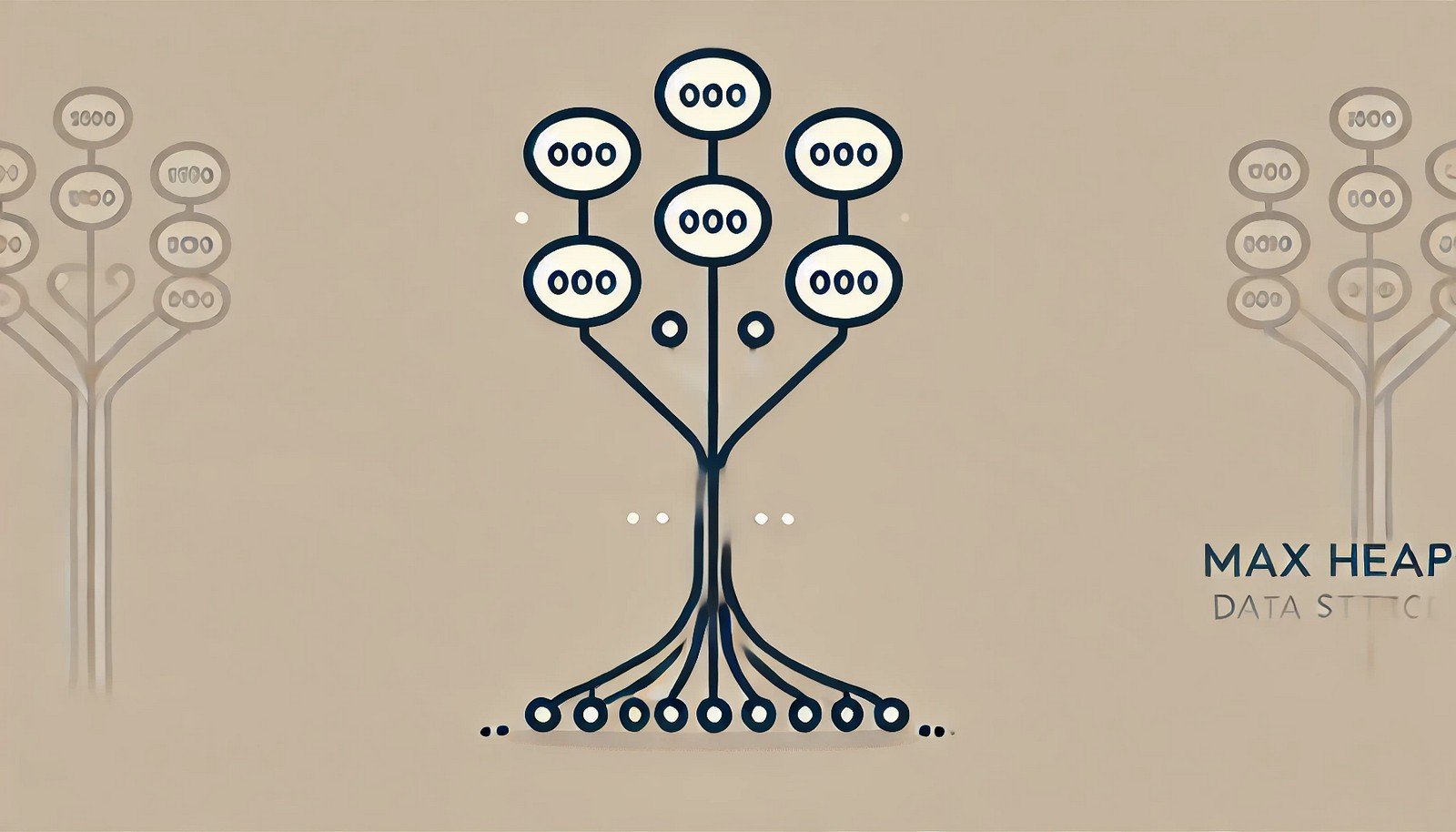Max Heap
 (Representational Image | Source: Dall-E)
(Representational Image | Source: Dall-E)
Quick Navigation:
- Max Heap Definition
- Max Heap Explained Easy
- Max Heap Origin
- Max Heap Etymology
- Max Heap Usage Trends
- Max Heap Usage
- Max Heap Examples in Context
- Max Heap FAQ
- Max Heap Related Words
Max Heap Definition
A Max Heap is a complete binary tree in which the value of each node is greater than or equal to the values of its children. It is commonly used in computer science for priority queues and heap sort. The root node holds the largest value in the heap. Inserting and deleting elements in a max heap ensures that this property is maintained, making it a highly efficient data structure for managing ordered data.
Max Heap Explained Easy
Think of a Max Heap like a pile of oranges where the biggest orange is always on top. If you add a new orange, it might roll down until the pile rearranges itself so that the largest orange is still on top. In the same way, a Max Heap keeps the biggest number at the top (the root).
Max Heap Origin
The concept of heaps, including Max Heap, was introduced in 1964 by J. W. J. Williams as part of the heap sort algorithm. It was designed to improve sorting efficiency.
Max Heap Etymology
The word "heap" comes from the Old English "heapan," meaning a pile or stack. In computing, "heap" refers to a structured collection of elements.
Max Heap Usage Trends
Max Heaps have seen consistent use in fields like computer science and data analysis. They are popular in algorithms for sorting and priority queues, where efficient access to the largest element is crucial. Recently, they have found use in real-time systems and big data applications due to their predictable time complexity.
Max Heap Usage
- Formal/Technical Tagging:
- Data Structures
- Priority Queues
- Algorithms - Typical Collocations:
- "max heap property"
- "heapify operation"
- "priority queue using max heap"
- "max heap implementation"
Max Heap Examples in Context
- A priority queue in a scheduling system can use a max heap to quickly retrieve the highest-priority task.
- Heap sort uses a max heap to sort data in descending order efficiently.
- In video games, max heaps help manage high-score leaderboards by quickly retrieving the top scores.
Max Heap FAQ
- What is a Max Heap?
A Max Heap is a binary tree in which the parent node is always greater than or equal to its child nodes. - How does a Max Heap differ from a Min Heap?
In a Max Heap, the largest element is at the root. In a Min Heap, the smallest element is at the root. - What is the time complexity of heap operations?
Insertion and deletion have a time complexity of O(log n), while access to the maximum element is O(1). - What is heapify in Max Heap?
Heapify is a process that rearranges elements to maintain the max heap property. - How is a Max Heap used in priority queues?
It allows efficient access to the highest-priority element. - Is a Max Heap always a complete binary tree?
Yes, a Max Heap is always a complete binary tree. - Can Max Heap be implemented using arrays?
Yes, Max Heaps are typically implemented using arrays for efficient indexing. - What is the difference between Max Heap and Heap Memory?
Max Heap is a data structure, while heap memory refers to a memory allocation technique in programming. - How does Max Heap relate to sorting?
Max Heaps are used in the heap sort algorithm to sort data in descending order. - What are some real-world applications of Max Heap?
Scheduling tasks, managing high scores in games, and implementing graph algorithms like Dijkstra’s algorithm.
Max Heap Related Words
- Categories/Topics:
- Data Structures
- Algorithms
- Priority Queues
Did you know?
Max Heaps play a crucial role in graph algorithms like Prim’s and Dijkstra’s, helping find minimum spanning trees and shortest paths with efficiency and speed.
PicDictionary.com is an online dictionary in pictures. If you have questions or suggestions, please reach out to us on WhatsApp or Twitter.Authors | Arjun Vishnu | @ArjunAndVishnu

I am Vishnu. I like AI, Linux, Single Board Computers, and Cloud Computing. I create the web & video content, and I also write for popular websites.
My younger brother, Arjun handles image & video editing. Together, we run a YouTube Channel that's focused on reviewing gadgets and explaining technology.



Comments powered by CComment